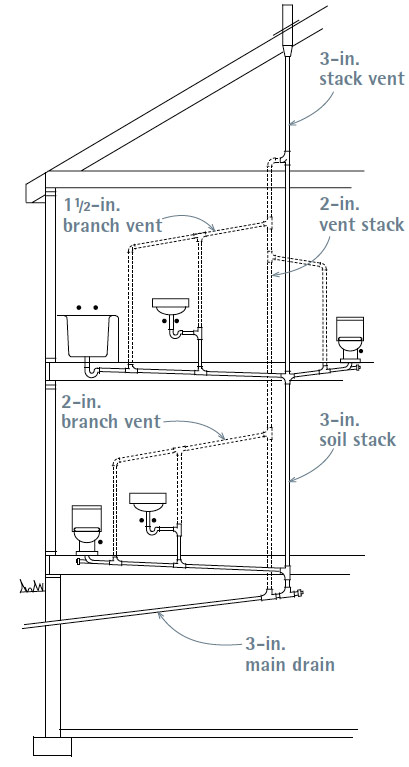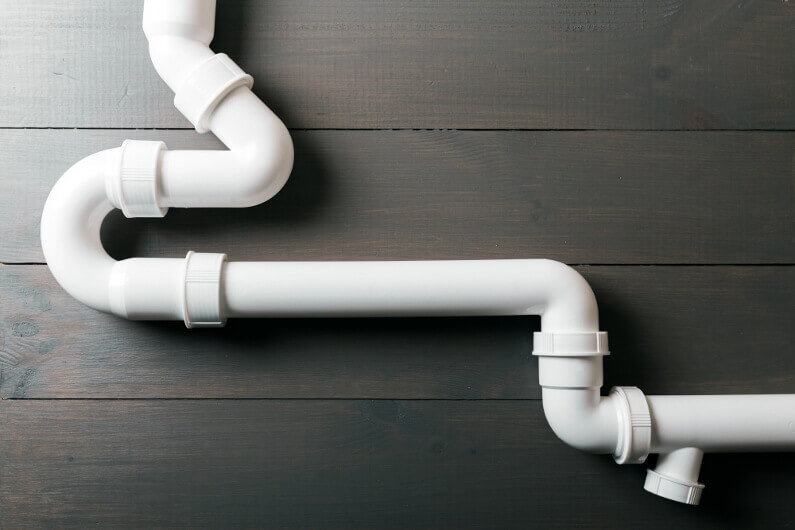The Reason Why Adequate Ventilation Is Critical in Plumbing Systems
The Reason Why Adequate Ventilation Is Critical in Plumbing Systems
Blog Article
The author is making a number of good pointers on the subject of Why Plumbing Air Vents Are Important as a whole in the article followed below.

Correct ventilation in plumbing systems is usually overlooked, yet it is crucial for keeping the functionality and safety and security of your home's pipes. Ventilation helps regulate air pressure, prevent the accumulation of harmful gases, and guarantee the efficient elimination of waste. In this guide, we will certainly check out the value of proper plumbing ventilation, exactly how it works, and the advantages it gives your pipes system.
Exactly How Air Flow Works in Pipes Systems
Atmospheric Pressure Guideline
Appropriate ventilation preserves well balanced air pressure within the pipes system. When water flows with pipes, it displaces air. Without appropriate air flow, this displacement can develop unfavorable pressure, bring about reduce drains or siphoning of water from catches, which can trigger unpleasant odors to seep right into the home.
Stopping Drain Gas Buildup
Among the most vital functions of pipes vents is to stop sewage system gases, such as methane and hydrogen sulfide, from building up within the home. These gases can position significant wellness risks and are extremely flammable. Vent pipelines enable these gases to leave securely outdoors.
Assisting in Waste Elimination
Air flow aids in the effective removal of wastewater by preventing airlocks in the water drainage system. When air can stream easily via the vents, it permits water and waste to flow smoothly with the pipelines, decreasing the risk of blockages and backups.
Advantages of Correct Ventilation
Improved System Efficiency
Effectively ventilated pipes systems run much more efficiently, with less blockages, faster draining pipes, and much less stress on the pipes. This performance extends the life expectancy of the pipes system.
Improved Air High Quality
By stopping sewage system gases from entering your home, correct air flow contributes to much better indoor air top quality, making your living environment healthier and more comfortable.
Stopping Water Damage
Sufficient ventilation helps prevent water from being siphoned out of catches, which can cause sewage system gases entering the home and triggering water damage over time.
Actions to Guarantee Appropriate Air Flow
Consulting Plumbing Codes
Constantly speak with neighborhood plumbing codes when designing or modifying your plumbing system. These codes supply the necessary standards for appropriate airing vent and guarantee your system fulfills safety criteria.
Normal Inspection and Maintenance
Regular inspections can help identify possible air flow issues before they end up being significant troubles. Upkeep tasks, such as cleansing air vent pipelines and looking for blockages, are essential for maintaining the system in good working order.
Specialist Setup
For new installments or major adjustments, it's smart to work with a professional plumbing technician. They have the knowledge to make sure the air flow system is properly created and mounted according to code.
Comprehending Air Flow in Plumbing
Ventilation in plumbing describes the network of pipes that enable air to stream with the drainage system. These vents offer several purposes, including regulating air pressure within the pipelines, protecting against drain gases from entering the home, and assisting in the smooth flow of wastewater.
Sorts Of Plumbing Vents
Key Stack Vent
The major stack vent, additionally known as the air vent pile, is the main vent in a plumbing system. It prolongs from the main drainpipe line up through the roofing, allowing gases to escape and fresh air to get in the system.
Branch Vent
Branch vents connect to the primary pile air vent and serve individual fixtures, such as sinks, toilets, and showers. These vents guarantee that each fixture has ample air flow to operate properly.
Air Admittance Valve (AAV).
An Air Admission Shutoff (AAV) is a one-way valve that permits air to get in the plumbing system without the requirement for a standard vent pipe expanding via the roof covering. AAVs are generally utilized in restorations or areas where mounting a typical vent is impractical.
Indications of Poor Ventilation in Plumbing.
Slow Draining Fixtures.
If your sinks, tubs, or toilets are draining pipes slowly, maybe an indicator of bad air flow. Insufficient air circulation can produce a vacuum cleaner result, making it tough for water to drain pipes effectively.
Gurgling Appears.
Gurgling noises coming from drains pipes are commonly an outcome of air being sucked through water traps because of adverse stress in the pipelines. This is a clear indicator of insufficient ventilation.
Unpleasant Odors.
Sewer odors inside your home are a red flag that your plumbing system is not properly ventilated. This could suggest that drain gases are not being appropriately vented outside, leading to potentially hazardous problems.
Usual Air Flow Mistakes.
Insufficient Vent Sizing.
Utilizing undersized vent pipelines can result in bad air circulation and stress imbalances in the system. It's vital to make use of vents that fulfill the certain needs of your pipes system.
Improper Vent Positioning.
Positioning vents as well much from the fixtures they offer can decrease their performance. Appropriate positioning ensures that air can stream openly and efficiently with the system.
Disregarding Code Requirements.
Building regulations give specific guidelines for plumbing ventilation. Disregarding these codes can cause a system that stops working to function correctly and may cause pricey fixings or carcinogen.
Verdict.
Proper air flow is a vital element of any type of plumbing system, making sure that it works effectively and safely. By understanding the relevance of air flow, acknowledging the indications of bad air flow, and taking actions to preserve your system, you can prevent costly concerns and safeguard your home's air top quality.
4 Things You Should Know About Your Plumbing Vents
What Plumbing Vents Are
Also called a vent stack, a plumbing vent is a vertical pipe attached to your drain line that runs through your roof. The plumbing vent pipe, or plumbing air vent, removes gas and odors from your plumbing system and allows fresh air to enter the pipes, helping the water to flow out of the drain pipes.
What Plumbing Vents Do
Plumbing vents have two basic functions. One of which is to allow unpleasant smelling wastewater and sewer gasses to escape your plumbing system instead of entering your home. Plumbing vent pipes are typically located on roofs, away from windows, to ensure the fumes exit the home completely.
The other function of the plumbing vent is to move fresh air into your plumbing system. This helps move water through every plumbing fixture in your house, like toilets and sink drains. Think of the way in which you need to let a little air into the bottle as you pour soda in order to make the drink flow smoothly.
Different Types of Plumbing Vents
True vent: This is the most common vent option. In simplest terms, a true vent is a vertical pipe attached to your drain line that exits through the roof. They often function as the main vent that other fixtures can connect to. Re-vent pipe or auxiliary vent: Attached to the drain line near specific plumbing fixtures, re-vent pipes run up and over to connect to the main vent. Common vent: Two plumbing fixtures installed on opposite sides of a wall are typically tied into the vent stack using something known as a sanitary cross. Wet vent: This venting option operates as a drain pipe and a vent at the same time. Wet vent drainage systems drain water from one fixture while venting the air from another. Although they’ve been used for over 100 years, wet vent systems have only recently been added to the plumbing code in many areas. If you’re planning on installing one in a bathroom remodel, make sure you check your local code prior to construction. Loop vent: For free-standing fixtures like kitchen island sinks, loop vents are ideal. These vent pipes run under the floor, rise from the P-trap, and create a loop inside the cabinet sink. Air admittance valve: An AAV is a one-way mechanical valve typically installed at the site of the plumbing fixture. AAVs allow venting to occur without having to tie into a larger venting system. They’re ideal for venting fixtures where you aren’t able to easily connect to an existing vent system. Common Plumbing Vent Issues
Although vent pipes typically don’t have water flowing through them, they’re still subject to many typical plumbing issues. For example, clogs are one of the most common problems associated with sewer vent pipes. If your vent pipe gets clogged, all of your plumbing fixtures tied into the vent stack will be affected.
A sink with a slow drain that bubbles and gurgles or a strong sewage smell around your toilet are both indicators that your toilet vent pipe is clogged. Because most vent pipes exit through the roof, old leaves, twigs or even a bird’s nest could be clogging the pipe.
Clogs in your vent pipe system cause a buildup of negative pressure, meaning that water won’t be able to flow out of your home very well. It’s similar to putting your finger over the opening of a straw to trap water inside. When you remove your finger, the water is able to flow out of the straw.
If you suspect you have any blockage in your vent, make sure you have a professional come examine the situation. Left unchecked, a blocked air vent can lead to other costly repairs, like leaks and sediment buildup.
Under Pressure
Pipe vents are essential aspects of a home’s plumbing system. Owning a home means learning about all sorts of things you never put much thought into before. But by understanding as much as you can about the important systems of your home, you can keep those budgets intact and those anxiety levels low.
https://www.homeserve.com/en-us/blog/home-improvement/plumbing-vents/

Do you appreciate more info about Essential Plumbing Vent Pipes: Understanding Their Role? Place a remark below. We will be happy to see your feelings about this review. We hope that you come back again soon. Make sure you set aside a second to distribute this blog post if you appreciated it. We recognize the value of your readership.
This Post Report this page